THE STORIES OF THE HOLY KING
A THOUSAND YEARS IN SAINT OLAV’S FOOTSTEPS
For a thousand years, Olav Haraldsson, better known as Saint Olav, has been one of the key figures in Norwegian history. Why is that?
The Holy King’s histories have been transferred to us through many different sources. They tell of both social elites and the depths of society. They portray the development of a nation and Norway’s contact with Europe and the rest of the world. They consist of both official narratives and folklore and show how symbols change according to the needs of society. They cover everything from the Viking Age until today, from Iceland to India, from powerful kings to petrified trolls.
Welcome to a journey - a thousand years in Saint Olav’s footsteps.
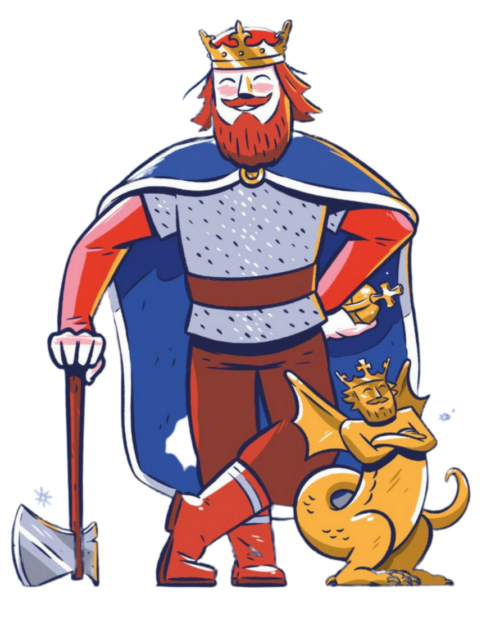
OLAV'S FAMILY
Olav was born in c. 995. His parents were Åsta Gudbrandsdatter and Harald Grenske. Harald was the great-grandchild of Harald Fairhair and died before Olav was born. Thus Olav grew up with his step-father Sigurd Syr. He had several half-siblings. One of them was Harald Hardrada, who later became king of Norway.
Olav married Astrid, a Swedish princess. This was a political move in the ongoing power struggles between Norway and Sweden. Olav and Astrid had a daughter, Wulfhild. She was known to be beautiful and later married the powerful duke of Saxony. Wulfhild is considered the ancestor of several European dynasties, including the Norwegian one.
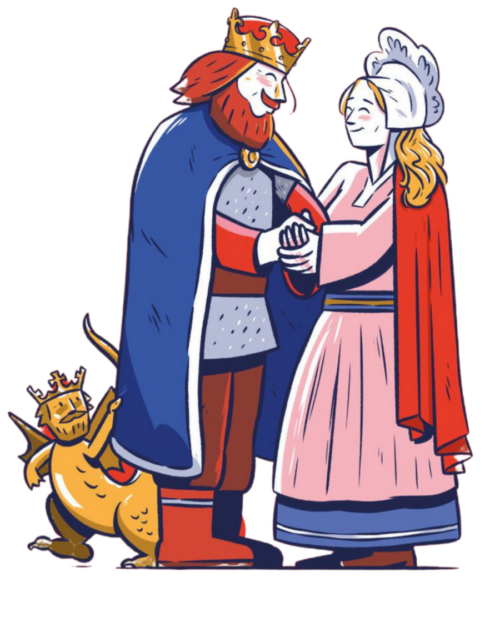
OLAV IN EUROPA
Olav travelled to Europe when he was only twelve years old and spent the next eight years abroad. He travelled to Sweden, Denmark, Finland, Russia, Estonia, the Netherlands, France, England, and Spain. He perhaps even sailed across the Mediterranean to Palestine. On his travels, Olav gathered riches and as well as political, religious, and cultural impulses.
For long periods of his stay abroad, Olav was a mercenary. Through this role, he became part of one of the biggest power struggles in Europe: the battle for England between the Danish king Sweyn Forkbeard and the English king Æthelred. Olav fought on both sides of the conflict, which was not uncommon: mercenaries fought for whoever paid the most.
Olav knew Christianity from his early years in Norway and the Europe Olav travelled through was mainly Christian. The rulers he met had God as their protector and the church as their strong patron. Perhaps inspired by this, Olav was baptised in Rouen, France.
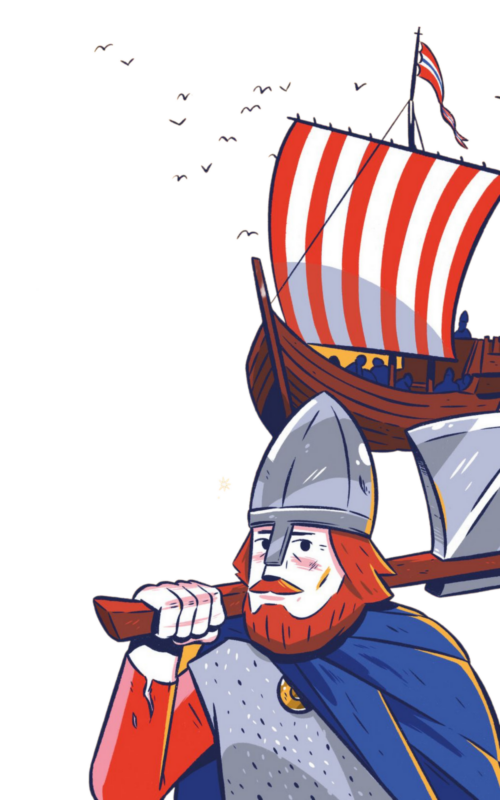
OLAV AS KING
Olav returned to Norway in 1015 with one goal: to become king. He was the great-great-grandchild of Harald Fairhair, but that did not automatically make him king. He therefore put a lot of effort into building alliances and fighting his rivals. In 1016 he won a grand victory in the battle of Nesjar. That same year he was accepted as king of Norway.
Olav was a typical king of his time. He valued power and was both a brutal enemy and a generous ally. He was also a lawmaker, traded goods, minted coins and laid the foundation for the future Norwegian state. He had close ties to the church and ensured that Christianity became the only legal religion in the country.
After a while, several of the country’s most powerful men had had enough of Olav’s reign. They joined forces with the Danish king and forced Olav to flee. He stayed with his family in Novgorod before deciding to reconquer his kingdom. 29 July 1030, Olav faced his enemies in the Battle of Stiklestad. Olav was killed in the battle.
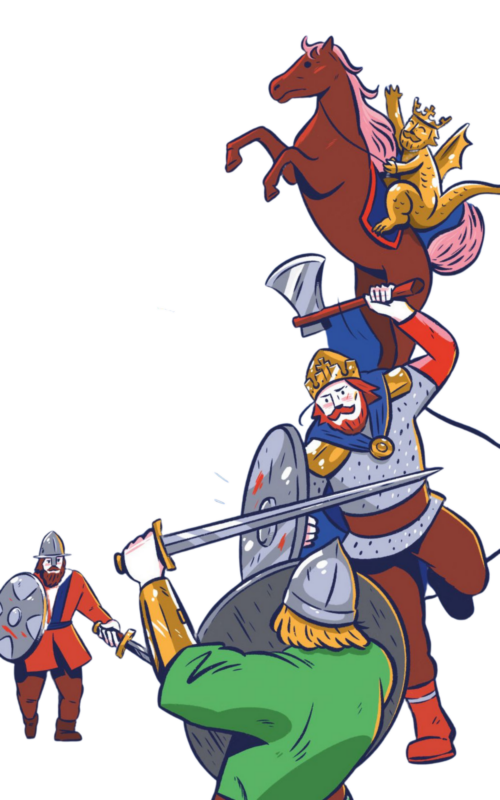
OLAV AS A SAINT
Olav’s body was secretly brought to Trondheim and buried. Soon, rumours of miracles started spreading. The grave was reopened 3 August 1031 and revealed that the king’s hair and nails had grown. The Bishop canonised Olav – and Olav Haraldsson became Saint Olav.
Saints are people who are said to have a particularly close connection to God. Olav was not declared a saint because of his actions while he was alive, but because of the miracles that happened after he died. Therefore, the Olav celebration, Olsok, is 29 July, the date of his death. At the time of his canonisation, the Eastern and Western churches were still united. Today, Olav is therefore venerated as a saint by both the Catholic and the Orthodox church.
Olav was not the only holy king in Europe: several kings were canonised in the same period - a result of both politics and religion. Europe in Olav’s time was characterised by state formation and Christianisation. Transformative processes like this called for strong, unifying symbols. The answer to this need was the holy king: monarchy and church united in one symbol.
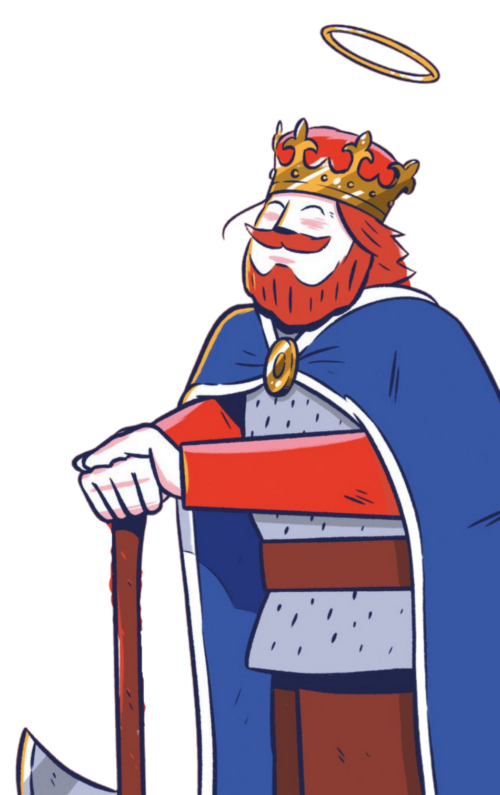
OLAV'S SHRINE
Saint Olav’s coffin or shrine consisted of three layers. The innermost held Saint Olav’s remains. On top of this, Olav’s son Magnus built a new wooden one: covered in silver and decorated with jewels. Later, a third shrine made out of silver was added. This triple shrine was the most valuable object in medieval Norway.
At first, the shrine was placed in the Saint Clement´s church in Trondheim. However, for most of the Middle Ages it stood on the high altar of Nidaros Cathedral, where it could be admired by the pilgrims who visited the king’s grave. On important holidays, the shrine was carried through the town.
The Shrine was destroyed during the reformation in 1537, as the Danish king abolished the Catholic church and the veneration of saints. A receipt tells us that the broken shrine provided 95 kilos of silver, 170 jewels and several golden plates. The innermost wooden coffin was brought back to the Nidaros Cathedral and buried. No one knows where.
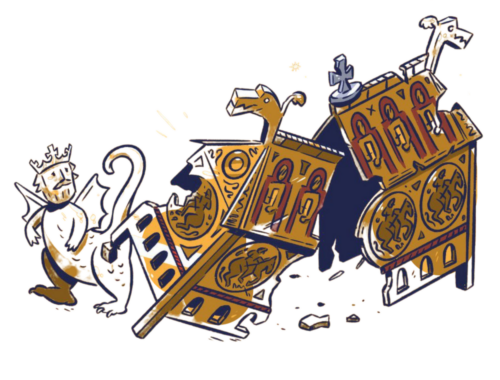
OLAV AND THE MIRACLES
The histories of Saint Olav, include a great number of miracles. One of the most well-known ones happened at Stiklestad shortly after the battle: a blind man who got the king’s blood into his eyes, suddenly got his vision back. The miracles were written down in the 12th century and gathered in a book called Passio Olavi.
Olav´s miracles are characterized by great diversity. He cured the sick and wounded, put out fires, gave the speechless their voice back, freed captives, turned bread baked on Olsok to stone, to name but a few examples. One dramatic story tells of a priest who got his eyes removed and his tongue cut out; the king healed him. Most of the miracles took place in Norway, but a few happened abroad.
Several of the miracles were related to Saint Olav’s stone: the large stone that the king leant against when he died. During the Middle Ages, this stone was part of the alter in Stiklestad church. Touching it supposedly had healing powers.
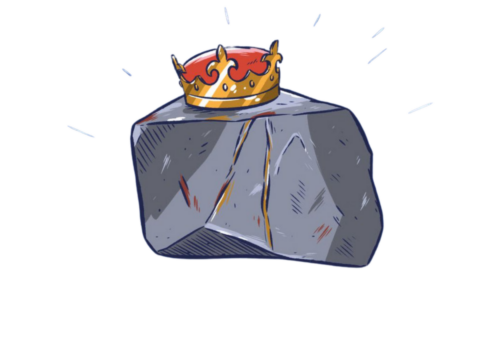
OLAV AND THE KINGS
After his death, Olav became known as “Norway’s Eternal King” and the holy ancestor to the future kings. Norway’s first Law of Succession even stated that king of Norway should sacrifice his crown to Olav and that he in reality only borrowed Saint Olav´s throne and kingdom. Several medieval kings of Norway therefore called themselves Saint Olav´s heir.
Some medieval kings were more focused on Olav than others. The infamous king Sverre said that Olav had come to him in a dream while he was staying in the Faroe Islands and told him to travel to Norway as his knight to become king. When Håkon Håkonsson was to be coronated by a papal messenger, he insisted that it should happen on Olsok.
The modern Norwegian monarchy also has strong links to Olav. The constitution of 1814 established Nidaros Cathedral, Olav´s burial church, as Norway’s coronation church. The Norwegian-Swedish king Oscar I introduced the Order of St. Olav in 1847 and in 1905, when Norway once again got its own royal family, the crown prince was named Olav.
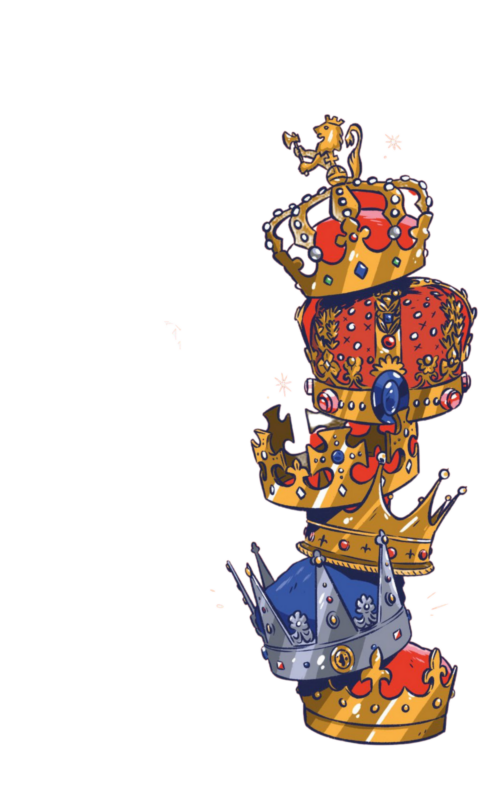
OLAV AND THE ARCHBISHOPES
Olav was the main reason that Trondheim/Nidaros became the religious capital of the medieval Norse world. In the 12th century, the pope decided that Norway and the islands belonging to the country should have their own archbishop and that his metropolitan see should be the city where Olav was buried. Nidaros Cathedral was built as the archbishop’s cathedral. The heart of the church was the high altar with Saint Olav’s shrine.
The archbishops put a lot of effort into enhancing the symbolic strength of the holy king. A crucial step in doing so was the construction of the cathedral. Another one was the collection of miracles in the book Passio Olavi. In addition to this, Olav was portrayed in art, celebrated through music and objects related to him were on display. Olsok, the Saint Olav celebration, became one of the biggest celebrations in Trondheim, in Norway and in the Norse world.
Medieval archbishops and kings often quarrelled over who was the most powerful. Olav was a popular tool for both parties. The two agreed that Olav was the country’s eternal king but interpreted his legacy very differently. While the kings said that they, as the direct successors of Olav, were the most powerful, the archbishops claimed that the church was the main representative of the saint and hence the prime authority.
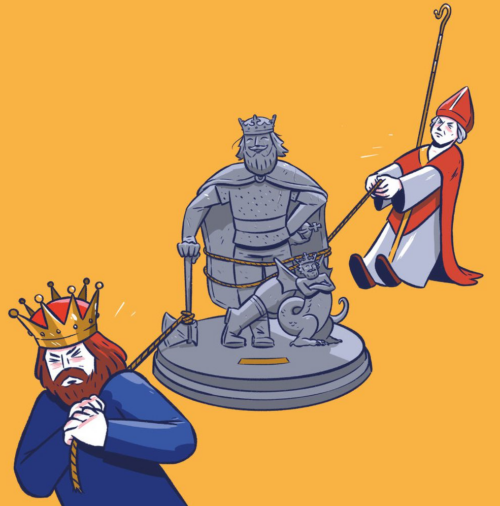
OLAV AND SYMBOLES
Olav quickly became the most significant symbol in Norway. He was a symbol of both monarchy and church, the main building blocks of the medieval Norwegian kingdom. Consequently, he also became the main symbol of Norway itself. Because of this, when Norway got its coat of arms around 1280, Olav presence was strong: the golden lion held Olav’s axe. It still does to this day.
Olav has also influenced the symbols of the Norwegian church. In the Middle Ages, the archbishop and his priests had Olav as the central motif in their official symbols: their signing seals. Today, the main symbol of The Church of Norway consists of two Saint Olav axes and a cross.
Traces of Olav can also be found in other official symbols. Trøndelag county chose Olav’s cross as its coat of arms in 2017. Verdal municipality, where Stiklestad is located, has chosen the king’s shield as theirs. Sør-Fron municipality has put an unusual twist on this tradition: their coat of arms shows the club used to destroy a statue of a Norse god when Olav confronted the heathen chieftain Dale-Gudbrand.
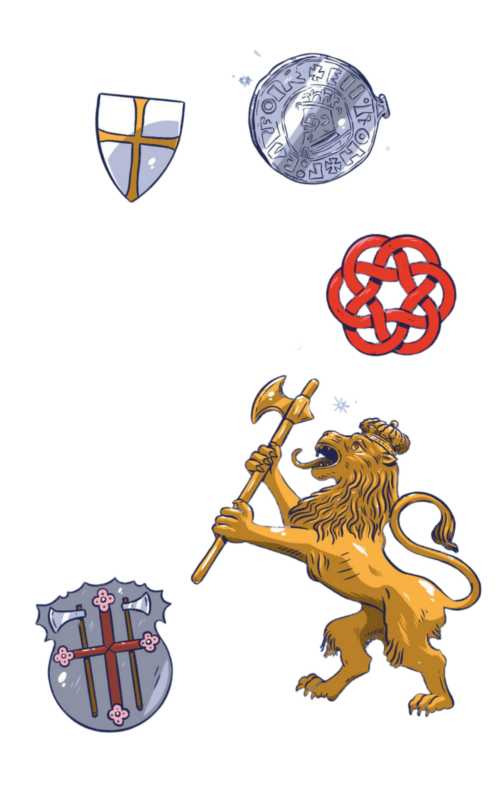
OLAV AND THE PILEGRIMS
Olav’s grave quickly became a popular destination for pilgrimage. Many pilgrims visited the saint to be healed. Others became pilgrims to seek forgiveness for their sins, or for the prestige and adventure of the journey. Most of the pilgrims were Norwegian, but some came from the other Nordic countries and some even from Europe.
We do not know how many people visited Olav’s grave. The fact that there were laws addressing the treatment of pilgrims shows that it must have been a significant number. Olav was the most important Nordic saint for a long time, only surpassed by Birgitta of Sweden in the later Middle Ages. The reformation abolished pilgrimage in Norway.
Today, the pilgrimage tradition has been revived. The modern pilgrim is also motivated by many different reasons, and they can choose between different routes and modes of transportation. Many travel large distances on the different St. Olav ways.
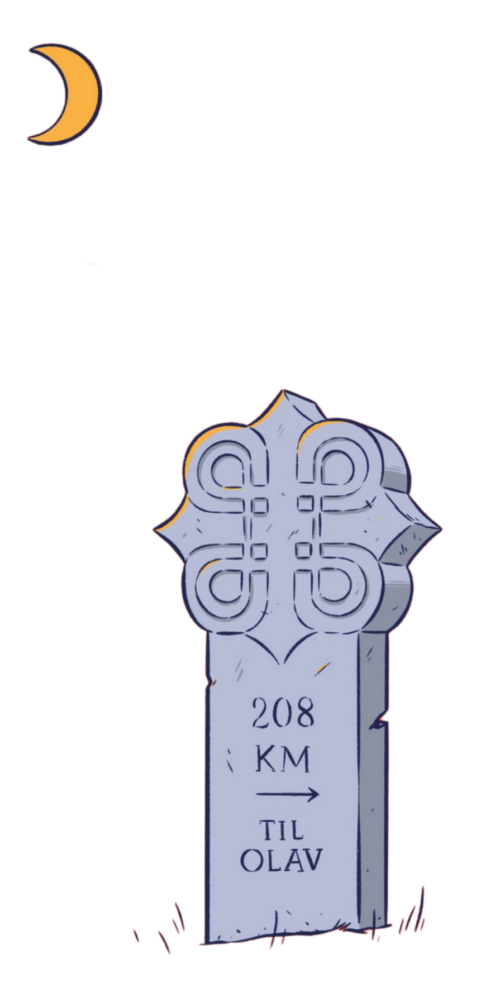
OLAV AND THE CHURCHES
Olav has lent his name to many churches around the world. We know of about 300, but the actual number is probably higher. The oldest can be found on Orkney, built right after 1030. In the Middle Ages, there were many Saint Olav Churches in Norway and in the Norse world, on the British Isles and around the Baltic Sea. There are also examples from the rest of Europe.
A Saint Olav church is a church that is devoted to the holy king. Surprisingly, the church most closely linked to Olav, was not: Nidaros Cathedral. Often referred to as Saint Olav’s burial church, its actual name is the Christ Church. There are three churches at Stiklestad: the medieval church built where the king died, the Catholic St. Olav’s Chapel, and the Orthodox Holy Olav Chapel.
Saint Olav churches have been built since 1030. One was built in Serampore, India in 1803, and later that century, one was built in Durban, South Africa. Many of the churches belonging to the Norwegian Church Abroad are Saint Olav churches. One of the newest examples of a Saint Olav church is the Catholic cathedral in Trondheim, built in 2016.
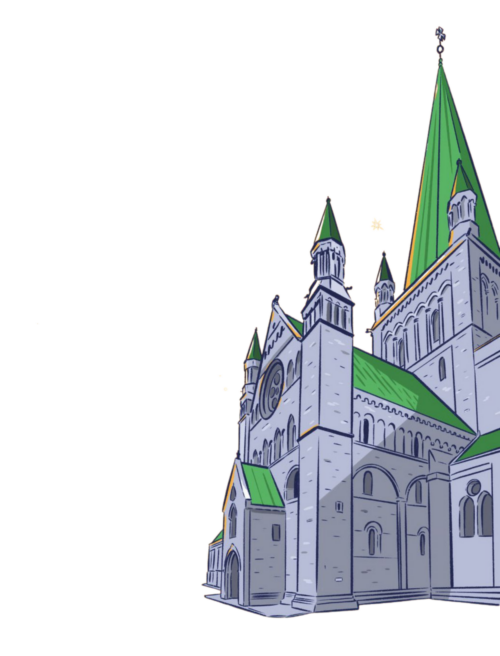
OLAV AND PLACE NAMES
Olav has lent is name to many places in Norway and abroad. Some we find in places Olav visited himself. Others have gotten their name because of a local tradition or myth related to Olav. Some chosen a name linked to Olav to mark a strong connection to Norway.
In Norway, many cities and towns have a street or road called either St. Olav’s, Olav the Holy’s or Olav Haraldsson’s. On Gotland, Sweden, you can visit St. Olufsholm. In Skåne, Denmark you find the village Sankt Olof. In Norfolk, England, you find the town of St. Olave. In Minnesota, USA, about 300 people live in St. Olav Township.
Some place names are linked to Olav without using his name. Here, the connection to the king can usually be found in local myths. A common example are names deriving from Oksen, “the Bull”, the name of Olav´s ship. Other names have more peculiar stories, like Skårset, which means “the cut” and got its name after Olav’s horse was injured there.
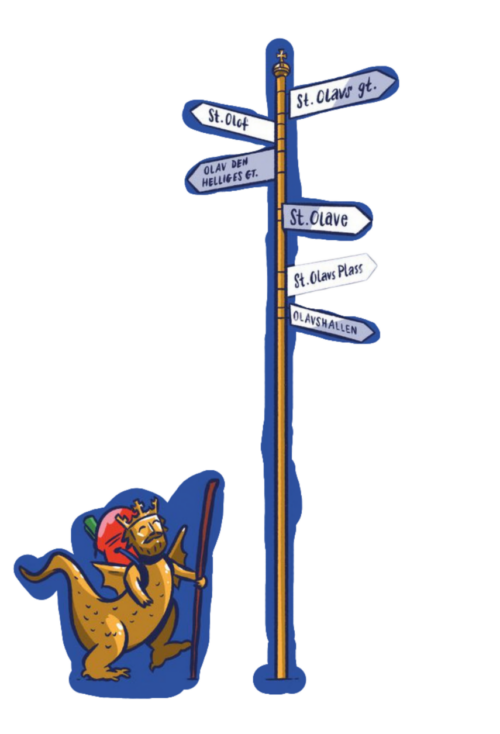
OLAV AND NATURE
Many traces of Olav can also be found in nature. All over the country, there are myths linking different phenomena to the king. The most well-known are the many Saint Olav springs. These are said to have appeared when the king was nearby, and their water is often known to have special powers.
In Folklore, Olav is responsible for creating everything from rivers to mountain ranges. One of the most famous myths tells of a boat race between Olav and his brother Harald. A mountain is said to have opened to give the king a shortcut. Many mountains are linked to this story. Other curious examples, include Olav’s tablecloth, Olav’s ravines, Olav’s snuff horn and Olav’s lunch box.
Olav is also linked to both flora and fauna. Many plants carry his name: St. Olav’s beard (a fern), Olav’s bowl (an orchid), Olavssúra (a flowering buckwheat) and Olav’s candlestick (a flower). One myth says that Olav is the reason that there are no vipers between Stjørdal and Verdal. Another states that Olav is to blame for the lack of trees on the Faroe Islands.

OLAV AND THE TROLLS
Olav was also famous for his skills as a troll fighter. Defeating trolls has always been popular topic in Norwegian folklore. In this tradition, Olav plays a similar role to what Thor had done in Norse mythology and Askeladden did in later Norwegian folktales.
In Norway and Sweden, you find many stone formations that are said to be trolls turned into stone after encountering Olav. Sometimes it was enough for Olav to say something to the troll. Other times he competed with it.
There are several myths about Olav, trolls and the building of churches. One of the most well-known ones is about Olav and Nidaros Cathedral. Olav promised to give the sun to the one who could place a spire on the cathedral. A troll accepted and completed the challenge. However, Olav then shouted at the troll, s it fell from the roof and died. Thus the cathedral got its spear, and the sun was allowed to remain in the sky.
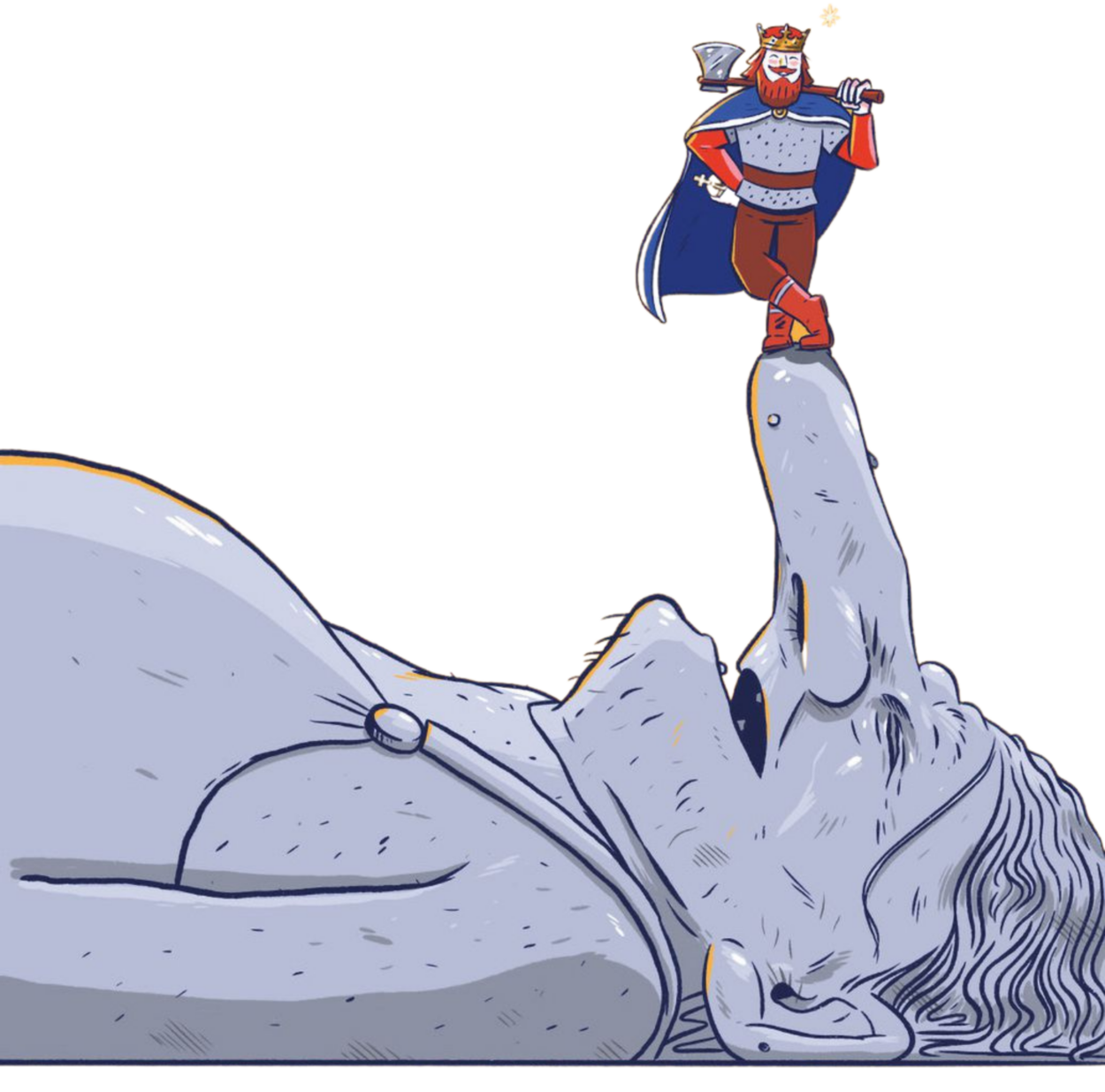
OLAV AND NASJONALISM
Olav had a renaissance in the 1800s. This was closely linked to the fight for Norwegian independence. History played a crucial part in this fight: Norway had been independent before and therefore had a right to become independent once more. To strengthen this point, the strongest symbol of the independent, Norwegian kingdom was revived: Saint Olav.
One of the strongest voices in this fight for Norwegian independence was the Nobel Prize awarded author Bjørnstjerne Bjørnson. In his speeches, he spoke of Olav as a symbol of Norway and the importance of fighting for independence. Bjørnson played a crucial part in reintroducing the Olsok celebration in Trondheim and held one of his most famous speeches at Stiklestad. He even included Olav when he wrote the Norwegian national anthem.
With fascism rising in the early 20th century, nationalism in Norway became more extreme. The Norwegian national socialist party Nasjonal Samling, was founded in 1933 and had a very strong link to Olav from the beginning. Stiklestad became one of the party’s most important political arenas and its leader, Vidkun Quisling, called himself Olav’s successor. Olav is still embraced by right wing extremists today.
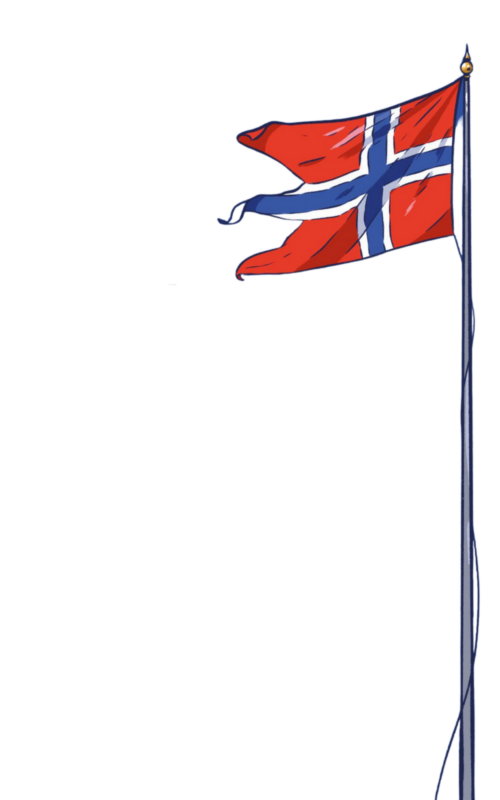
OLAV AND PORTRAITS
Olav has been presented in many different ways. The king can often be recognised from his signature objects: the crown, the globus cruciger, and the axe. He is also often depicted with a defeated dragon at his feet. His face, hair and clothes have changed with the trends through time. The oldest known image of Olav dates from the 1100s and can still be seen in the Church of the Nativity in Bethlehem.
Olav has been a popular motif in art and literature. Sculptures, paintings, textiles, coins, stained glass, seals, souvenirs, and more have created a myriad of different depictions. The first texts were written by skalds, the poets of Olav’s own time. Since then, several writers of both fiction and nonfiction have contributed with their interpretations of the king.
The most famous modern depiction of Olav is in the Saint Olav Drama. Since the premiere in 1954, more than 800 000 people have met Olav on the stage at Stiklestad. Several of the country’s most prominent actors have taken on the task of portraying the king.
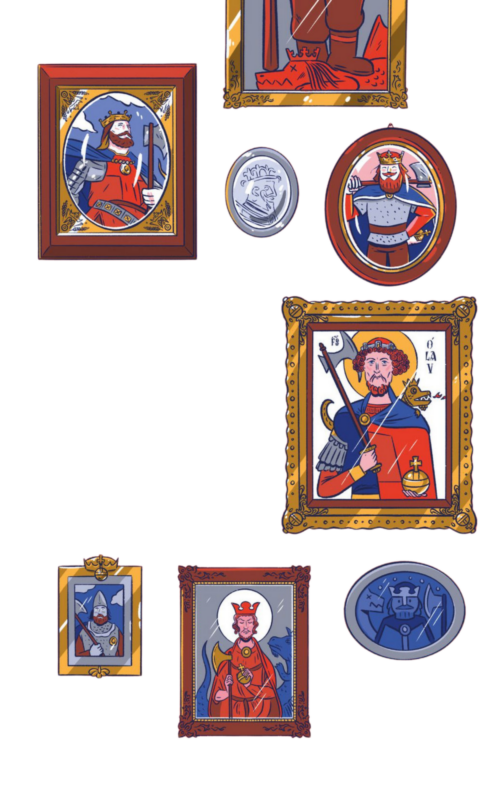
OLAV TO DAY
Olav still has a strong and multifaceted presence. His name is used in everything from St. Olav’s Hospital to Olav the Holy Dart Club, he is an important saint and identity marker, the main character in both plays, margarine commercials and so much more. This shows that Olav is more than a history of the past: he is a dynamic part of the present.
Despite the reformation, the celebration of Olsok never disappeared completely. Today, Olsok is both a religions celebration and a large cultural event through festivals like Olavsdagene in Sarpsborg, Olsokdagene at Stiklestad, Olavsfest in Trondheim and Olsok in Tolga. Olsok is also the national day of the Faroe Islands.
In 2030, a thousand years have passed since the battle of Stiklestad. The jubilee will draw even more attention towards Olav and his legacy. The thousand year old debate about who Olav really was, what his legacy is and should be, will therefore continue and be shaped by our own time. One thing is therefore certain: the last story of Saint Olav has not yet been told, the journey in his footsteps continues.
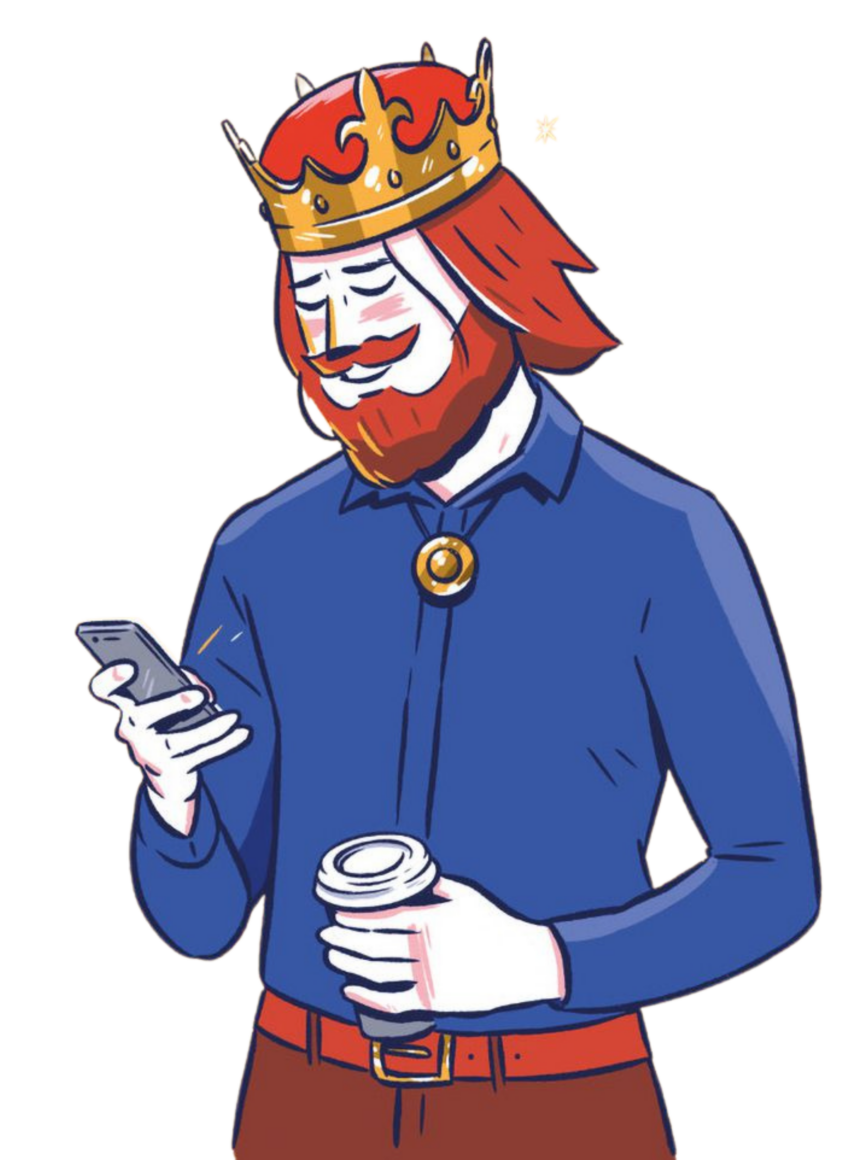
ILLUSTARASJONER AV FRODE SKAREN VED TANK DESIGN